MARIANI’S
Virtual
Gourmet
December
10, 2017
NEWSLETTER
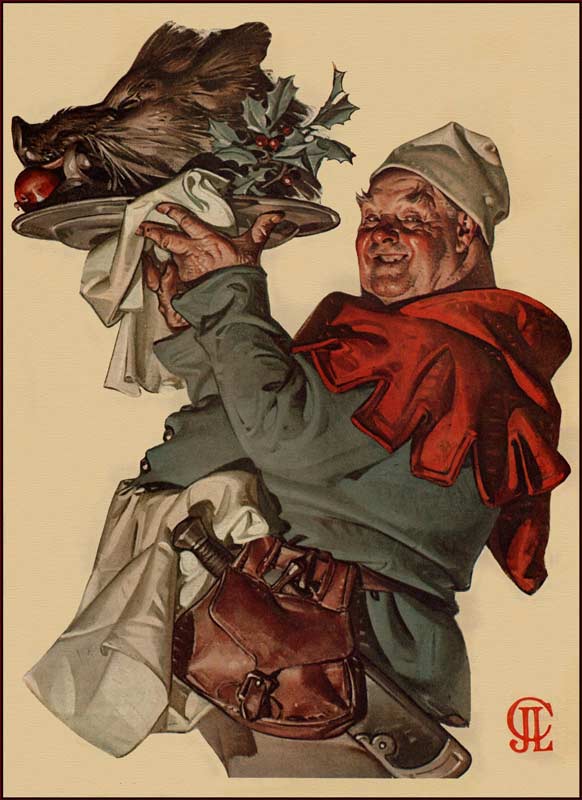
by J.L. Leyendecker
❖❖❖
IN THIS ISSUE
GREAT RESTORATIONS
Part One: The Ritz, Paris
By John Mariani
NEW YORK CORNER
CHIMICHURRI GRILL EAST
By John Mariani
SOME HARD FACTS ABOUT YOUR BEEF
By John Mariani
NOTES FROM THE WINE CELLAR
FOUR GENERATIONS OF MONDAVIS
AT CHARLES KRUG
By John Mariani
 A GREAT
CHRISTMAS GIFT
A GREAT
CHRISTMAS GIFTThe Hound in Heaven (21st Century Lion Books) is a novella, and for anyone who loves dogs, Christmas, romance, inspiration, even the supernatural, I hope you'll find this to be a treasured favorite. The story concerns how, after a New England teacher, his wife and their two daughters adopt a stray puppy found in their barn in northern Maine, their lives seem full of promise. But when tragedy strikes, their wonderful dog Lazarus and the spirit of Christmas are the only things that may bring his master back from the edge of despair.
WATCH THE VIDEO!
❖❖❖
GREAT RESTORATIONS,
Part One: The Ritz Paris
By John Mariani
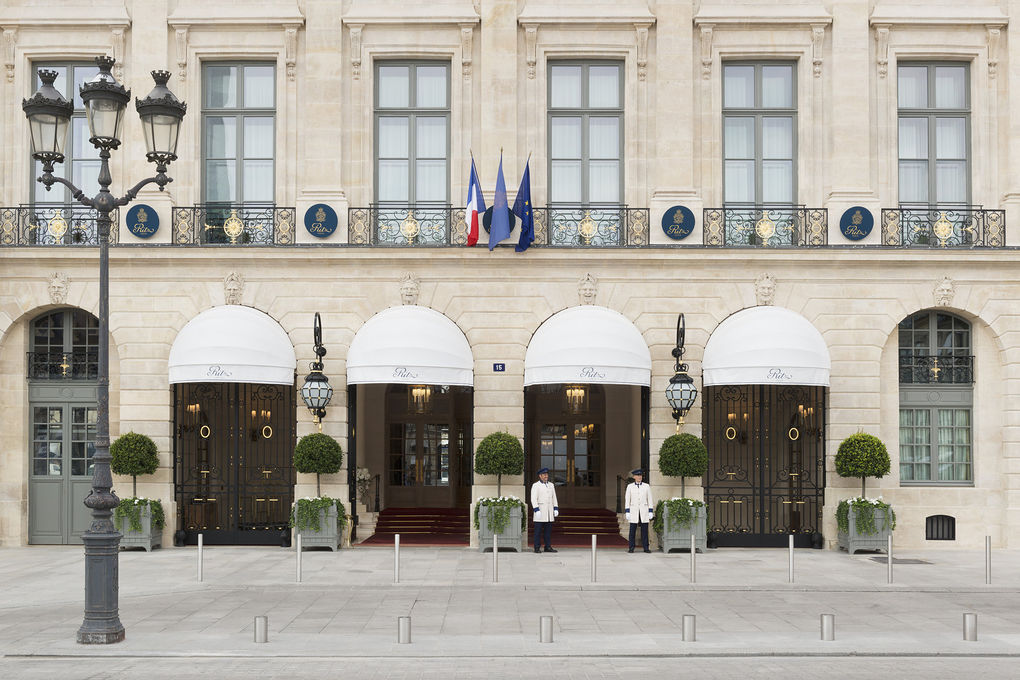
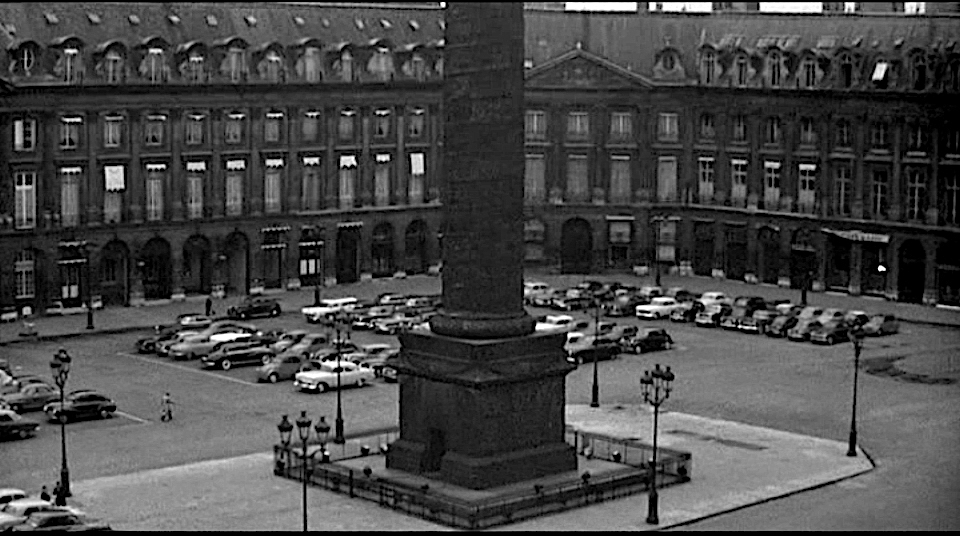 the
buildings.
the
buildings.
Like every building in Paris up until a decade ago, The Ritz was once a gritty dark gray, as it was when Gary Cooper seduced Audrey Hepburn there in the 1957 movie Love in the Afternoon (right). Now, carefully scrubbed clean, the façade of the great hotel glows with a Chanel-like beige, behind which is a new glittering interior whose own lighting makes the venerable old hallways and dated suites now among the most vibrant in the city.
New York-based designer Thierry W Despont enlisted an army of a thousand workmen and artisans to restore, re-assemble, refine and redeem every square inch of the five huge connected buildings, one a former ducal residence dating to1705, the garden to 1898, a 1911 hotel addition on the Rue Cambon, and four two-story townhouses with roof terraces. The trick was to do it all without destroying its character, retaining as many fixtures, paintings and decorative flourishes as possible. The new Ritz was not to be a museum, however. Seventy-eight new paint colors were trademarked; all needed to be approved by various landmark committees.
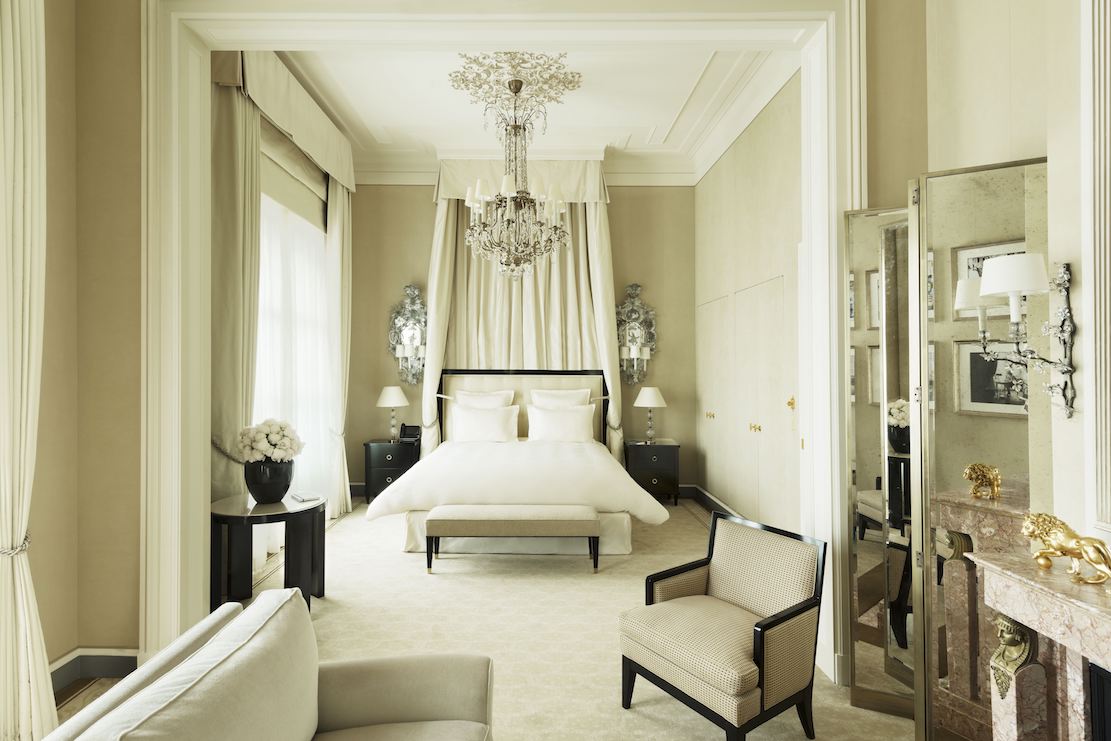 Now
with 142 suites and rooms (reduced from 159), The
Ritz would still be immediately recognizable to
its celebrated clientele over the past
century—right down to the gold swan bathroom
fixtures—from Marcel Proust to Maria Callas. Ernest
Hemingway, who wrote, “"When
I dream of an afterlife in heaven, the
action always takes place at the Ritz
Paris," is once again commemorated at the
evocative Hemingway Bar (below), now a
fresher version of all that regulars have loved
about the room and still manned by the redoubtable
bartender Colin Field, who actually served as The
Ritz’s ambassador to the world during the
four-year closure.
Now
with 142 suites and rooms (reduced from 159), The
Ritz would still be immediately recognizable to
its celebrated clientele over the past
century—right down to the gold swan bathroom
fixtures—from Marcel Proust to Maria Callas. Ernest
Hemingway, who wrote, “"When
I dream of an afterlife in heaven, the
action always takes place at the Ritz
Paris," is once again commemorated at the
evocative Hemingway Bar (below), now a
fresher version of all that regulars have loved
about the room and still manned by the redoubtable
bartender Colin Field, who actually served as The
Ritz’s ambassador to the world during the
four-year closure. 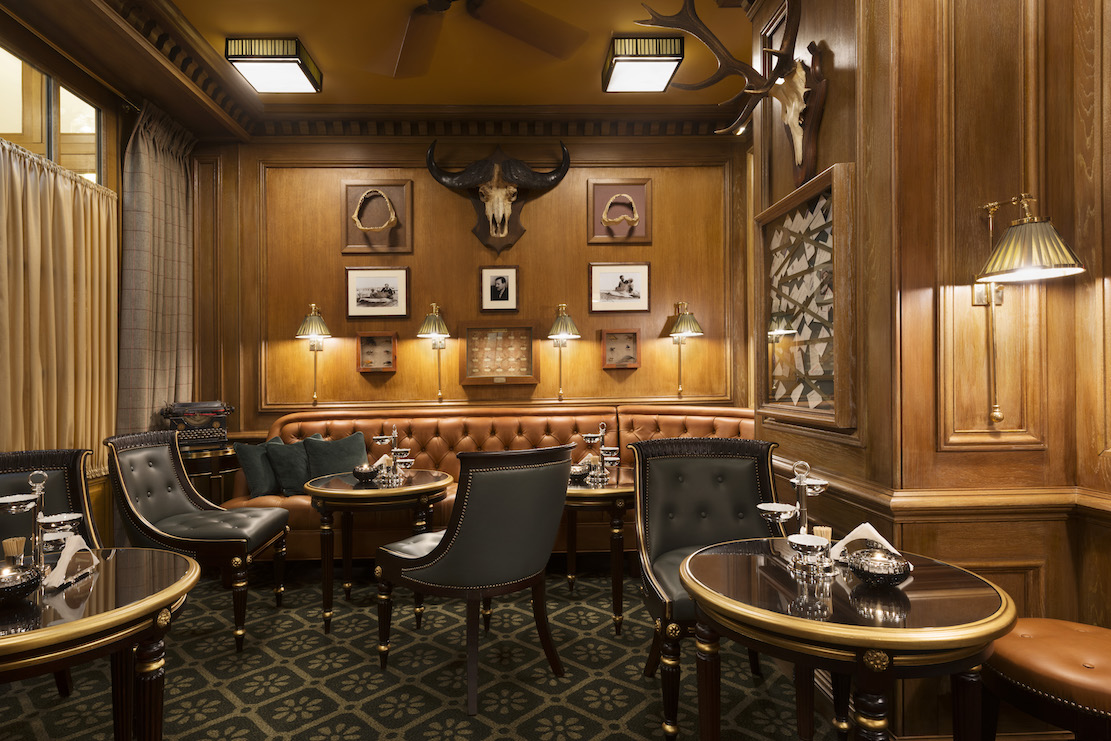
Now, walking through the lobby, checking in at the airy front desk, strolling by the sumptuous, book-filled Salon Proust and through the Gallery lined with five posh boutiques and 95 showcases, you no longer have the hushed sense of moving down a church nave; instead, you experience what might be called a new Belle Époque in Paris, for all the grand châteaux hotels—the Plaza-Athenée, Le Meurice, Le Bristol, the Crillon and the George V—have been given similar treatments.
Bought in 1979 by Mohammed Al-Fayed and given a make-over in the mid-1980s that included a two-story wellness spa, a private members' club and the Ritz Escoffier Cooking School, the hotel never lacked for an affluent clientele, but the pall cast on its being the last residence of Princess Diana and her lover, Dodi Fayed, before their death in a high-speed car chase never wholly lifted. Now, though, where once entry to The Ritz might cause doleful remembrance, that tragedy has melted into a bittersweet memory among many in the hotel’s long history.
Clearly, while restoring the best of the old Ritz, what was once considered comfortable luxury even twenty years ago would now be considered passé and out-of-date, so that air-conditioning, wi-fi, hidden wiring for all business requirements, a spectacular new Spa and Pool (the largest in Paris) with trompe l’oeil ceiling, and, perhaps most significant, modern bathrooms that are more spacious and bathed in natural light.
I had occasion last June to dine at and report on
the new Les
Jardins de L’Éspadon, the more casual dining
room next to the formal L’Éspadon Restaurant
(where I have yet to dine), where I have not
dined, both overseen by Chef Nicholas Sale, who
also runs a cooking school for up to 40 people. Within
five months of opening last year, the former 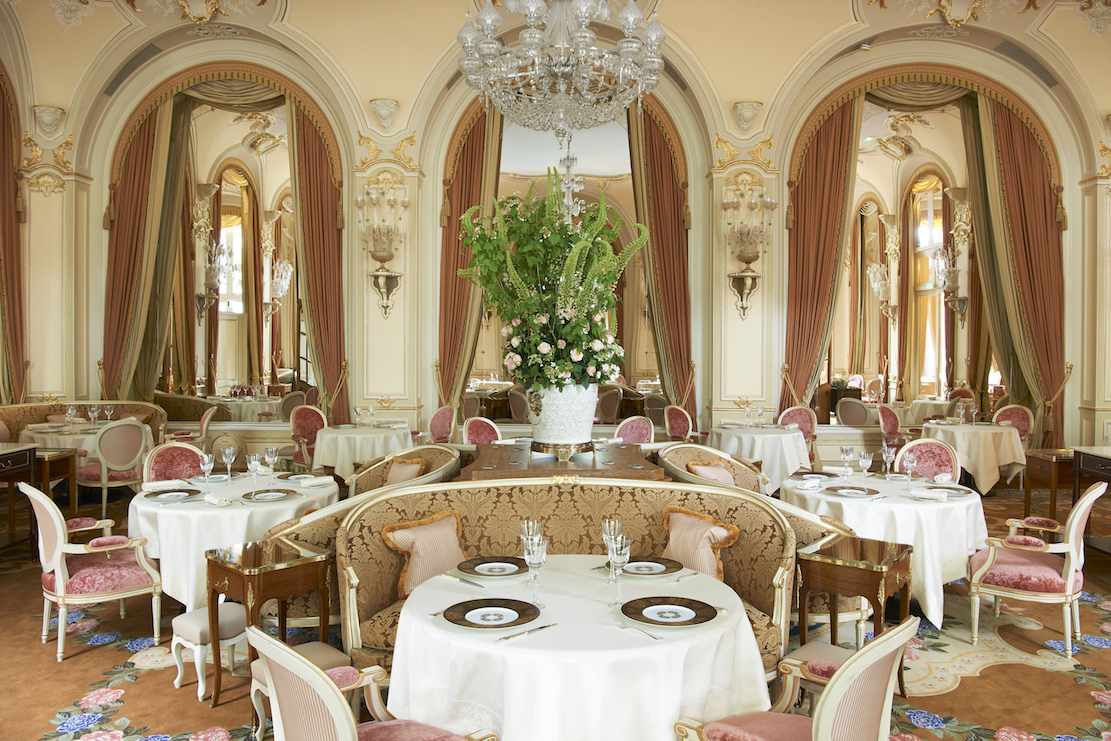 garnered
one Michelin star, the latter raised to two. As my
report indicated, Les Jardins is suffused with
light in an orangerie-style room, with excellent
modern French cuisine and, as I learned at
breakfast, some of the best croissants in Paris
and a pain
perdue—French toast to us—that’s already
becoming a signature item. Lunch prices at Le
Jardin are 95€ to 145€.
garnered
one Michelin star, the latter raised to two. As my
report indicated, Les Jardins is suffused with
light in an orangerie-style room, with excellent
modern French cuisine and, as I learned at
breakfast, some of the best croissants in Paris
and a pain
perdue—French toast to us—that’s already
becoming a signature item. Lunch prices at Le
Jardin are 95€ to 145€.
The dining room at L’Éspadon (left) is far
brighter than it used to be, though largely in the
ornate style of its predecessor; the menu is very
lavish and jaw-droppingly expensive: dinner is
both á la carte, with main courses up to 120€, and
prix fixe of five courses 195€, for seven courses,
340€, without wine; tax and service are included.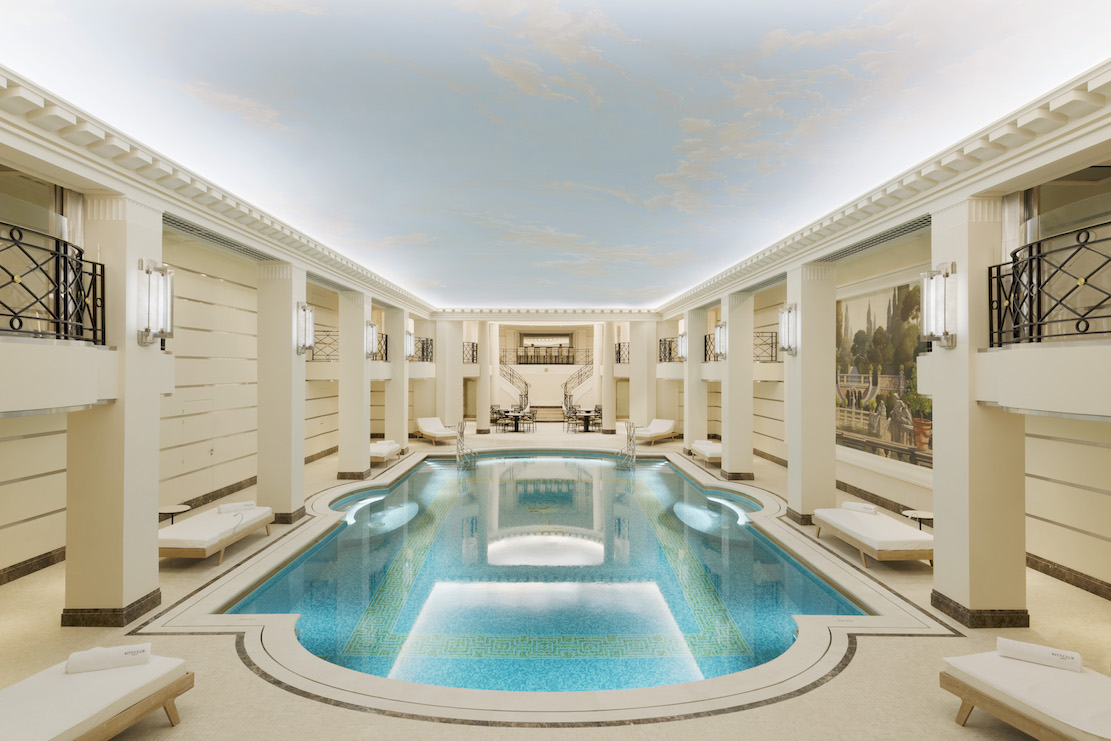
Of course, everything at The Ritz is expensive—rooms in December start at 1,000€. How could it be otherwise? Obviously, you are paying not just for the posh and the history but also for brigades of people behind the scenes—the florists and gardeners, the pool maintenance crew, the wedding and banquet planners, the engineers, upholsterers, chambermaids, a staff whose members speak a dozen languages, scores of cooks, patîssiérs, breadmakers, maître d’s, captains, waiters, sommeliers, security—those who move quietly, often unnoticed but always at the ready. photo George
The Ritz Paris is
open again, and Hemingway’s dreams are all intact.
By John Mariani
CHIMICHURRI GRILL EAST
133 East 61st Street (near Lexington Avenue)
646-707-0801
The Brazilian steakhouse, including a couple of chains in the U.S., has pretty much had a lock on South American restaurants outside of the Bronx and Queens, largely, I think, because it’s a lot of fun to help yourself to gargantuan meals of skewered meats along with apps and salads.
Nevertheless, Argentinians are South America’s
great beef eaters, who couldn’t care less if
they get their orange juice in the morning as
long as they get a steak at night. In
every neighborhood of Buenos Aires there seems
to be a restaurant with a wood-fired grill
heaped with sausages, sweetbreads, kidneys,
langoustines, and various cuts of beef. And,
given Argentina’s large Italian population,
there are good pastas to be found in abundance.
All of this is what makes Chimichurri Grill East (the original, smaller Chimichurri is on Ninth Avenue, with almost an identical menu) a very welcome introduction to Argentina’s cuisine, and, despite a menu loaded with cuts of grilled beef, you could have a sumptuous meal of appetizers like firm polenta sticks topped with Argentine blue cheese ($12), littleneck clams in white wine and chorizo ($18), and much, much more.
The restaurant is in two parts: Up front is the well laid-out bar, where you can sit at a glossy marble counter or tables and feast on small plates (there’s a happy hour menu). Then there is a small rose-colored lounge followed by a wholly unexpected large dining room with a huge crystal chandelier, marble fireplace and molded wainscoting. The experience of going from one room to the other is like the astronaut in 2001: Space Odyssey going through a time warp and finding himself in some neoclassical room, complete with tables set with thick, double cloths.
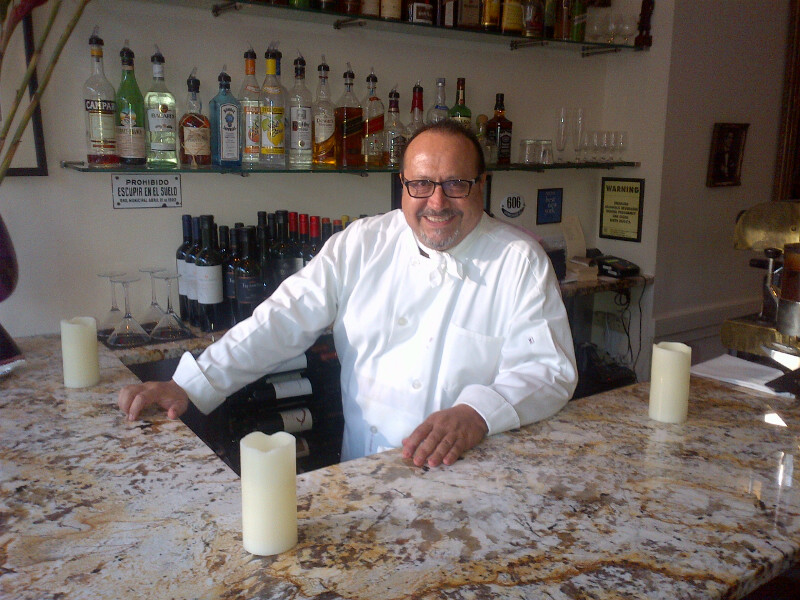 The menu
is wide-ranging, from small plates and salads to
pastas—Argentina has an enormous Italian
population and Buenos Aires many fine Italian
restaurants—to items from the grill. I invite you
to check out Chimichurri’s website, whose gallery
teems with photos of irresistible dishes. I asked
chef/co-owner Carlos Darquea (left) to just
keep bringing out food from every category, an
idea he was excited by, so you should ask him the
same.
The menu
is wide-ranging, from small plates and salads to
pastas—Argentina has an enormous Italian
population and Buenos Aires many fine Italian
restaurants—to items from the grill. I invite you
to check out Chimichurri’s website, whose gallery
teems with photos of irresistible dishes. I asked
chef/co-owner Carlos Darquea (left) to just
keep bringing out food from every category, an
idea he was excited by, so you should ask him the
same.
We began with a slew of regional empanadas within crisp pastry ($12), one of beef, one of chicken, one of Swiss chard and manchego cheese (below), along with a hefty platter of Argentine chorizo, blood sausage, Spanish chorizo ($21), which went very nicely paired with a vinegar-and-old graced watercress salad ($10).
The two pastas we tried were excellent, one “ravioles de
mi vieja” ($21)—“mom’s ravioli”—that really
did have a homey, robust, good-for-you size and flavor, and house-made pappardelle
ribbons with a ragù made from ribeye ($26), giving
it plenty of rich fat in the sauce, along with
Malbec red wine and just enough tomato to add
sweetness.
There were four of us at the table, but we took food home after doing our best to finish a 16-ounce gaucho ribeye of grass-fed Black Angus South American beef ($58), luscious grilled baby lamb chops ($48), a filet mignon with a rich blue cheese sauce ($38). We did not take home the crispy polenta fries lavished with blue cheese ($14), because they were polished off greedily. The same result with the quemada (“burnt”) cauliflower ($10).
I’ve
inveighed more than once about the ubiquity of
farmed sea bass served in restaurants, so I was
very happy to see and taste wild branzino
(market price) at Chimichurri, a wonderfully
meaty, flavorful fish grilled and glossed with
olive oil and lemon.
Prices overall are remarkable for the size of the portions, including a parrillada tradicional for two composed of short ribs, hanger steak, pork and blood sausages and potatoes at $75.
After such a hearty meal, desserts may seem too much of a good thing, but they are very, very good, including a crêpe with dulce de leche sauce (left); chocolate crème brûlée with a spark of cayenne; and a crisp and thin caramelized apple crêpe topped with homemade caramel ice cream (all $12).
If you are curious as to how far the Argentine wine industry has come, you could start with Chimichurri’s list, one of the most extensive of its kind, with plenty of bottlings you don’t see anywhere else. Carlos is the one to ask for some special selections, which are sold at fair prices.
You’ll see a number of Argentinians at Chimichurri—and they have a tango night on Tuesdays—including families who long for this kind of food. NYC is lucky to have two such restaurants, which are as close to the best you’ll find outside of Buenos Aires.
Open Mon.-Sat. for lunch, and dinner.
❖❖❖
SOME HARD FACTS
ABOUT YOUR BEEF
By John Mariani
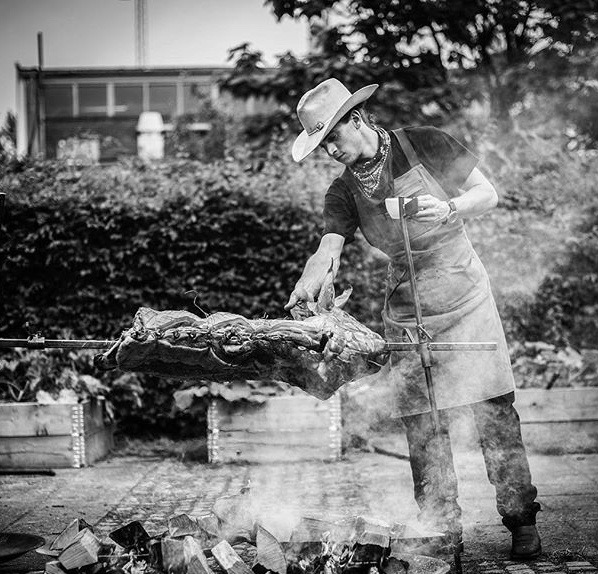 With
so many restaurants claiming to be serving
USDA Prime beef and wagyu from the most
exclusive Japanese purveyor, I thought I'd get
closer to the truth of the matter by
interviewing Jack Matusek (left), Founder of Raw
Republic Meats and co-author, with s5 butchers
from around the world of Butchers’ Manifesto.
With
so many restaurants claiming to be serving
USDA Prime beef and wagyu from the most
exclusive Japanese purveyor, I thought I'd get
closer to the truth of the matter by
interviewing Jack Matusek (left), Founder of Raw
Republic Meats and co-author, with s5 butchers
from around the world of Butchers’ Manifesto.
Q: The amount of certified USDA Prime beef traditionally has never been more than two percent of the beef market, yet scores of steakhouses are opening around the U.S. claiming they serve Prime. How is that possible?
A: The growing demand for Prime
grade beef has triggered ranchers to find ways to
maximize the amount of Prime grade beef they can
produce. Ranchers are now spending huge amounts of
money (sometimes in the six-digit range) on bulls
or semen that will produce offspring that will
exhibit the money trait: marbling. John
Mayer of Guymon, Oklahoma, has bought
many of these “super bulls” in the past few years
and has increased his Prime beef output
dramatically. According to Texas Akaushi rancher
Tony Spears, some outfits, such as 44 Farms, are
now boasting 40% of their output as Prime grade
beef. 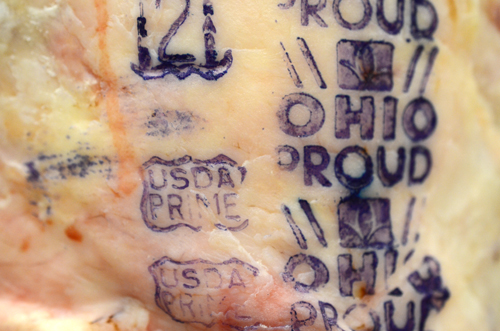
Q: So it is possible to increase the amount of Prime—which must be inspected and graded by the USDA—or are these suppliers simply claiming it is Prime?
A: Ty Lawrence, an animal science
professor at West Texas A&M, is currently
investigating whether cattle cloning is the answer
to the prime beef demand. After spotting the
greatest prime carcass of his career, he gained
permission to clone a bull from DNA in the
carcass. The result, Alpha, was then bred to three
other Prime clone heifers at a research study at
West Texas A&M. The offspring already are
taking on all the desired physical traits as well
as sporting an incredibly tough immune
system.
Feeding ratios have also become important as ranchers look for the perfect blends of proteins to give their beef advantages in flavor, tenderness, and marbling over their competitors. Corn continues to remain in the process as it remains the most efficient way to fatten cattle. Today, the Prime beef cattle now control 3% of the total market due to increased genetic and feeding control. As the demand for high-quality beef continues to rise, expect more ranchers to turn to genetics to fill American bellies.
Q: And how is it that, aside from obtaining Prime beef, can these steakhouses buy it dry-aged?
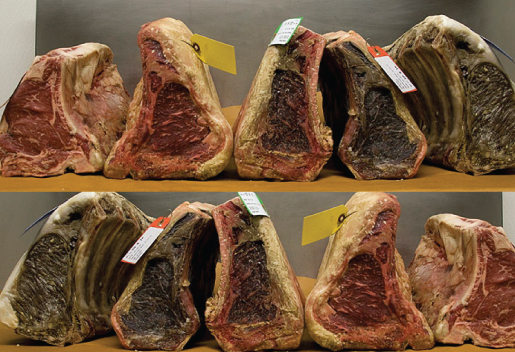 A: For
thousands of years, the only form of aging had
been dry aging. Beef is hung in the carcass form,
primals or subprimals, at near freezing
temperatures with heavy ventilation for weeks on
end. During this period, enzymes began breaking
down muscle tissue, which makes the meat more
tender. At the same time, the meat loses moisture,
which concentrates flavors within the meat.
A: For
thousands of years, the only form of aging had
been dry aging. Beef is hung in the carcass form,
primals or subprimals, at near freezing
temperatures with heavy ventilation for weeks on
end. During this period, enzymes began breaking
down muscle tissue, which makes the meat more
tender. At the same time, the meat loses moisture,
which concentrates flavors within the meat.
Dry aged beef from DeBragga Butchers, NYC
The downside of this
method is that the meat must be heavily trimmed,
which drives the price up. The moldy, crusty faces
of the meat must be discarded, but still must be
accounted for. 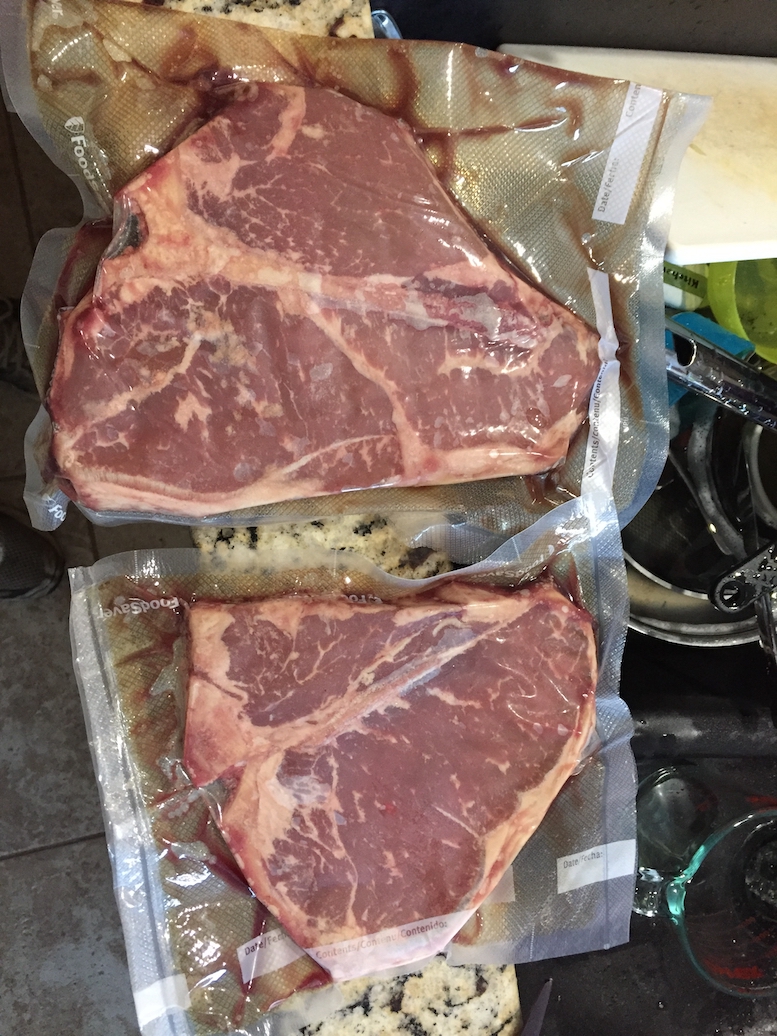
The invention of vacuum packing in the 1970s brought about “wet aging,” whereby meat is placed in a plastic bag and stored in a refrigerator (right). This method allows the meat to age in its own juices, sometimes leaving behind a slight metallic flavor. When using this technique, the meat doesn’t have to be trimmed, saving a lot of meat and keeping costs down.
Today, a vast majority of the beef market uses wet-aging techniques, somewhere around 95%. Dry aging is a very expensive business to get into. Customers should check the restaurant menu and make sure it specifically states “Dry aged for xx days.” Want a little more confirmation? Ask to see the dry aging setup.
Q: Is all American beef aged to a degree?
A: Just about all beef is aged at least 7 to 14
days, usually in the harvesting facilities. From
there, the carcass is broken down and used in a
number of ways. Most often, you will see dry-aged
steaks anywhere from 28 to 48 days. This is an
ideal time frame for aging as the meat has started
to tenderize and some flavors have started to
concentrate and develop. I have seen steaks aged
past 400 days. Knife, a John Tesar
restaurant in Dallas, experiments with a wide
range of dry-aged steaks. When steaks are aged
past 100 days, the flavors become very intense and
cheese like, which can be off-putting to some.
Q: Then there’s the question of wagyu, once wholly unavailable in the U.S. Now it seems ubiquitous.
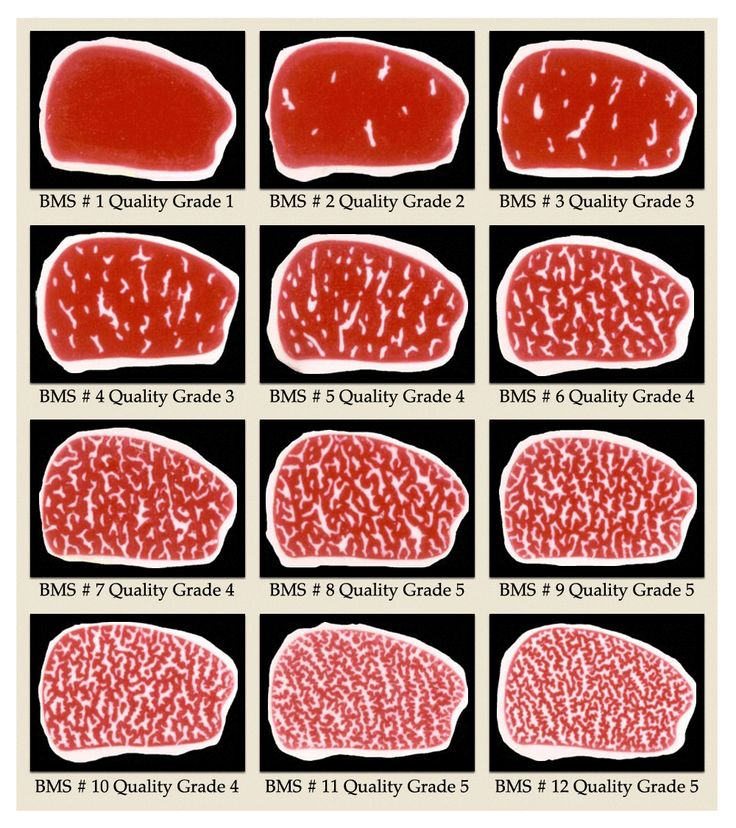 A: I have only worked
with Texas Wagyu a few times and I have yet to
make it to Japan and Australia to really grasp the
essence of this phenomenon, so I am by no means an
expert on that subject. Yet, the Wagyu/Kobe
mystique still shrouds the American mind and
wallet, so I’d love to give you my take on
it.
A: I have only worked
with Texas Wagyu a few times and I have yet to
make it to Japan and Australia to really grasp the
essence of this phenomenon, so I am by no means an
expert on that subject. Yet, the Wagyu/Kobe
mystique still shrouds the American mind and
wallet, so I’d love to give you my take on
it.
Kobe grades
A few years ago, I read a Forbes
article by Larry Olmsted in which he separated
fact from fiction when it comes to Wagyu and Kobe
beef in the United States. He has since published
an updated article on the Kobe
movement as well as a book, Real Food,
Fake Food. My Wagyu information stems
from his writings as well as a few Texas Wagyu
breeders I’ve visited.
In 1976, the U.S. began its import of Japanese beef, Wagyu. Wagyu is broken into four breeds of cattle (below): Akaushi (Red and Brown), Kuroushi (Black), Japanese Polled, and Japanese Short Horned. Tajima-gyu, the only breed that can be certified “Kobe,” is a strain of The Black Kuroushi (below), which makes up about 90% of cattle raised in Japan. Over the next two decades, bulls, heifers, and genetics made their way to the United States shores. In 2010, the U.S. placed a ban on Wagyu because of a foot-and-mouth disease outbreak in Japan. It is for this reason that a lot of prized Brazilian and Argentinean beef doesn’t reach the United States. In August 2012, the U.S. began allowing small amounts of Kobe beef to be imported.
I like to say Kobe beef is like Champagne. If it
isn’t produced 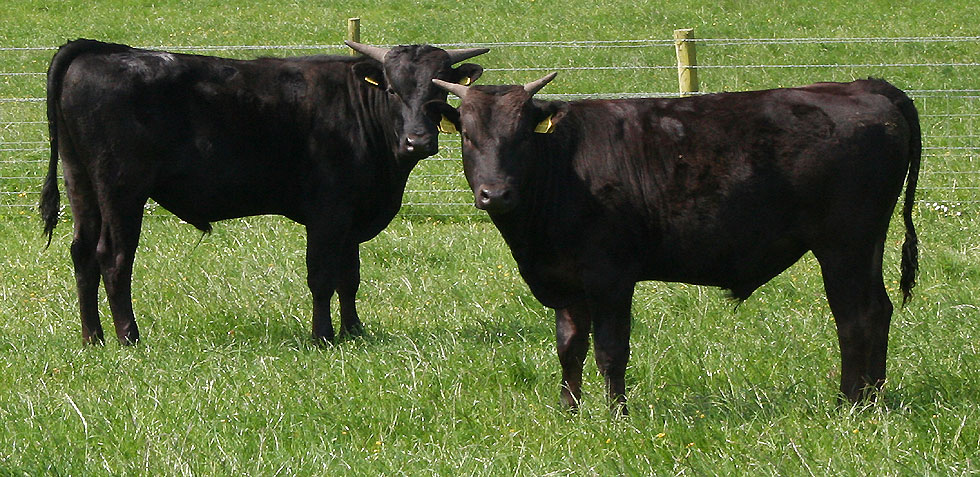 in the
Champagne region of France, it isn’t champagne.
It's not just the grapes that produce the wine’s
flavor, but all the environmental factors, like
soil, rain patterns, and airflow, that effect the
end product—the terroir, a French word for “sense
of place.”
in the
Champagne region of France, it isn’t champagne.
It's not just the grapes that produce the wine’s
flavor, but all the environmental factors, like
soil, rain patterns, and airflow, that effect the
end product—the terroir, a French word for “sense
of place.”
My expertise is in charcuterie and there is a similar phenomenon with Prosciutto di Parma (below). Prosciutto from this area is prized due to the pigs being raised in ideal circumstances, and for the weather. The dry, fragrant air sweeps off the Apennine Mountains, creating a perfect environment for curing meat and imparting a unique flavor that cannot be replicated. If the entire product isn’t produced in Parma, it isn’t Proscuitto di Parma.
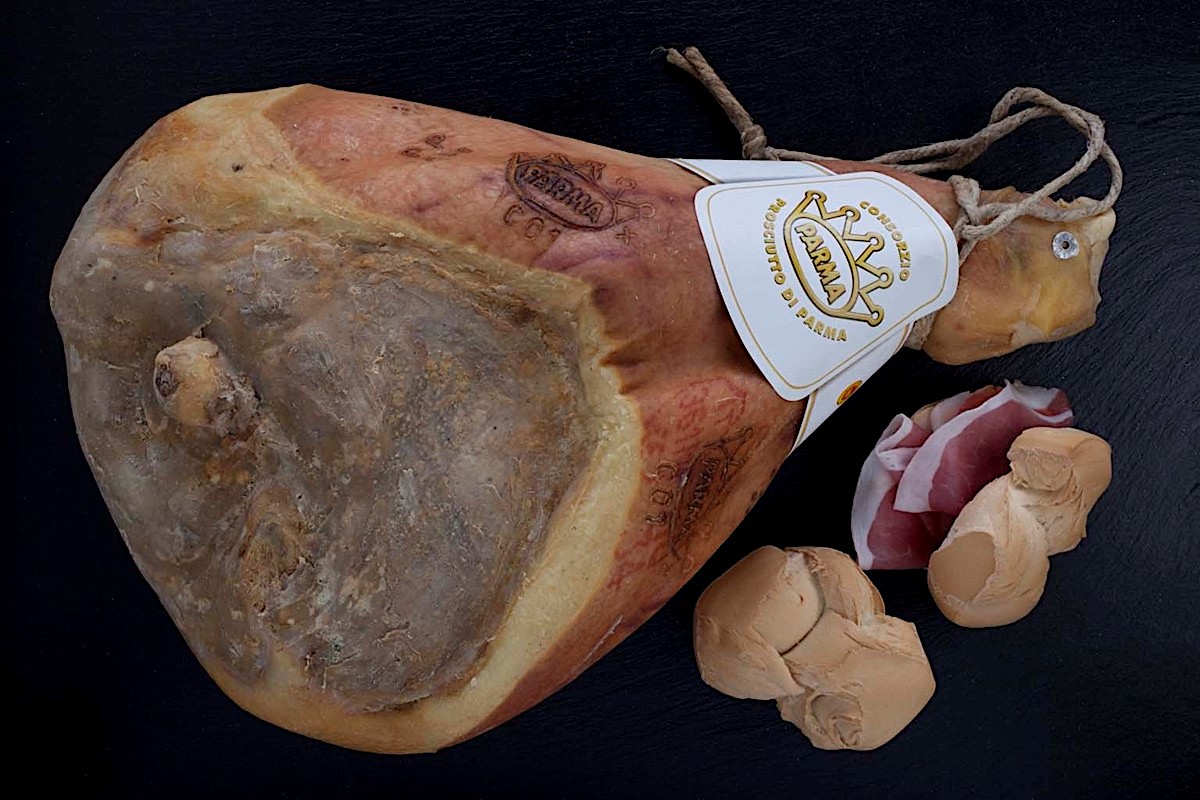 This “Kobe beef mania”
has grown due to false labeling and advertising.
Because USDA labeling laws are very vague
(non-existent when dealing with Japanese beef),
many restaurants slap the “Kobe beef” or
“Kobe-styled Beef” label on their product and get
away with it. The animals they are selling might
have been just a ¼ Wagyu and ¾ Angus and raised in
Texas, but the general public doesn’t know the
difference. A vast majority of the Wagyu that you
see in the states have been crossbred with native
cattle breeds to better adapt the foreign breed to
their new environments. There are only about a
dozen authorized dealers of Kobe beef in the
states and I’ve provided an up-to-date list here.
This “Kobe beef mania”
has grown due to false labeling and advertising.
Because USDA labeling laws are very vague
(non-existent when dealing with Japanese beef),
many restaurants slap the “Kobe beef” or
“Kobe-styled Beef” label on their product and get
away with it. The animals they are selling might
have been just a ¼ Wagyu and ¾ Angus and raised in
Texas, but the general public doesn’t know the
difference. A vast majority of the Wagyu that you
see in the states have been crossbred with native
cattle breeds to better adapt the foreign breed to
their new environments. There are only about a
dozen authorized dealers of Kobe beef in the
states and I’ve provided an up-to-date list here.
With only 4,000 head of cattle meeting the requirements of “Kobe Beef” each year, chances are that much of the American public hasn’t touched it. Last year, the United States as a whole received just over 600 pounds of certified Kobe beef from Japan.
Q: If an
importer or restaurateur wanted to pay for the
real wagyu and Kobe, how would he go about it?
A: If you were going to get into the meat business, I’d advise planning some producer visits. The only way to really know what you are putting in customers’ mouths is to go visit the source. I know a number of good quality ranches that produce Prime grade beef, such as 44 Farms, but many are already overwhelmed due to current demand.
If you were going to open a steakhouse chain tomorrow, my number one stop would be 7X. The all-natural beef coming out of Colorado cattle is some of the best out there and they can handle quantity as well.
As far as authentic Kobe beef, my best advice
would be to book a flight to Japan and go shake
some hands. I think Japanese producers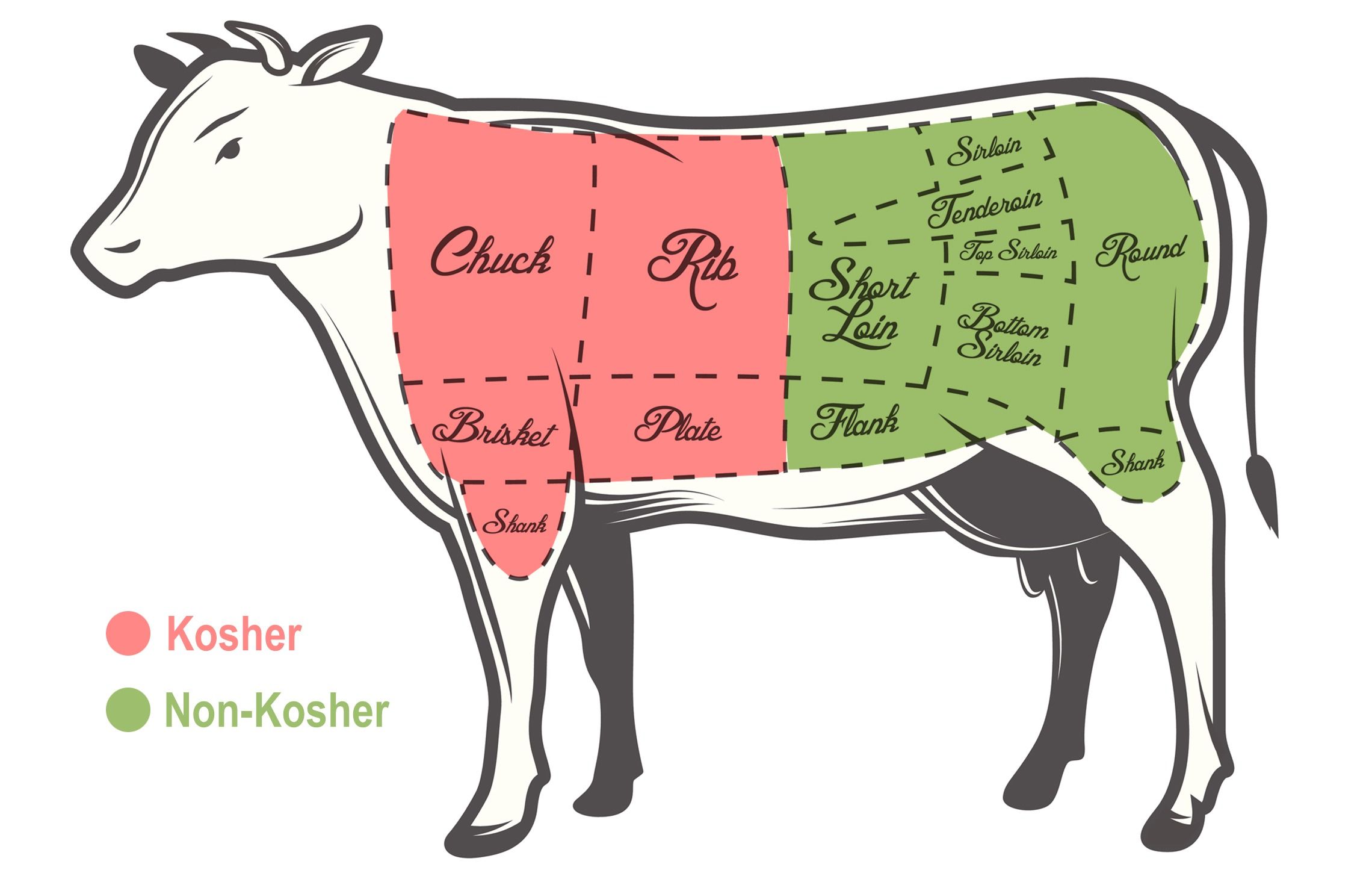 are much more likely to
deal with someone they have met in person rather
than a random person they received an email from.
I made my way around Europe in a similar fashion.
After sending countless emails, I went and knocked
on the doors of butcher shops until someone let me
in the door to work for them.
are much more likely to
deal with someone they have met in person rather
than a random person they received an email from.
I made my way around Europe in a similar fashion.
After sending countless emails, I went and knocked
on the doors of butcher shops until someone let me
in the door to work for them.
Q: And what exactly is kosher beef?
A: Kosher beef is beef fit for
Jewish consumption. The cattle must be slaughtered
in a very ritualistic manner by a highly skilled
butcher of high moral character. Cattle are
usually chained by the leg to separate corners of
the room and then given an inspection. If the
animal passes the physical inspection, the butcher
uses a very quick motion to slice through the
throat and major blood vessels in the steer’s neck
and the animal bleeds out while still conscious.
It is a very stressful slaughter and the meat
quality is certainly affected because of it. The
organs are then submitted to another rigorous
inspection and then the front half of the carcass
is deveined under rabbinical supervision. The
posterior end of the steer is too difficult to
devein and is usually sold as non-kosher beef.
NOTES FROM THE WINE CELLAR
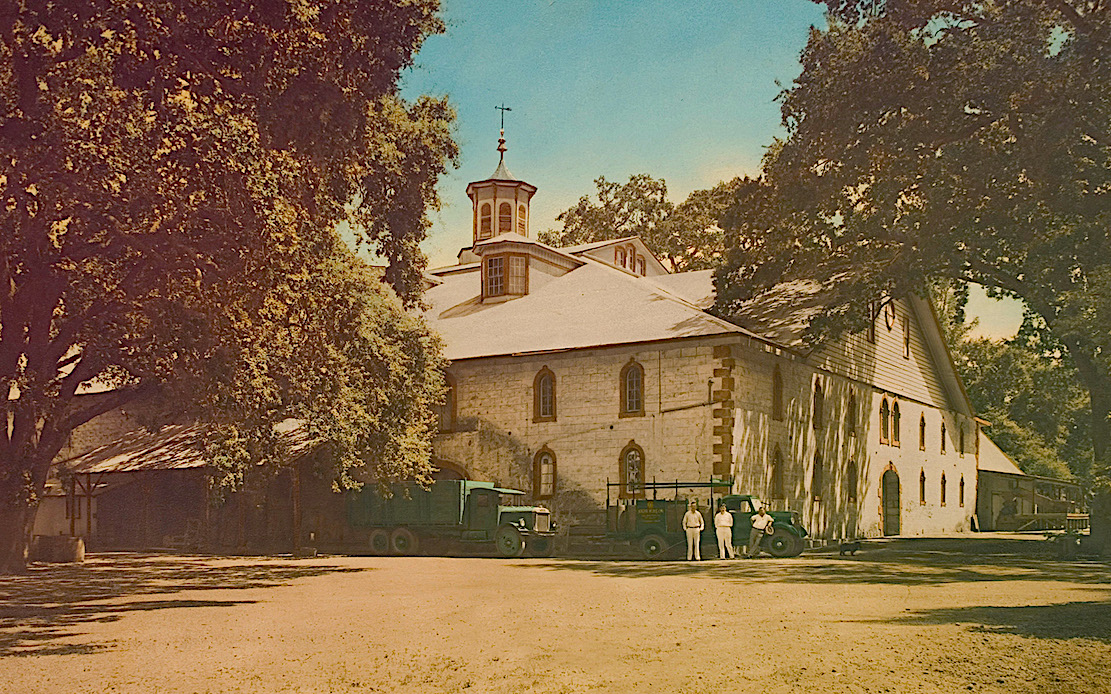
Way back in 1861, while the Civil War was in full swing in the East, a Prussian immigrant named Charles Krug (below) arrived in California’s Napa Valley to pioneer what was to become the state’s first commercial winery. (Incidentally, the winery has no relation to Krug Champagne.)
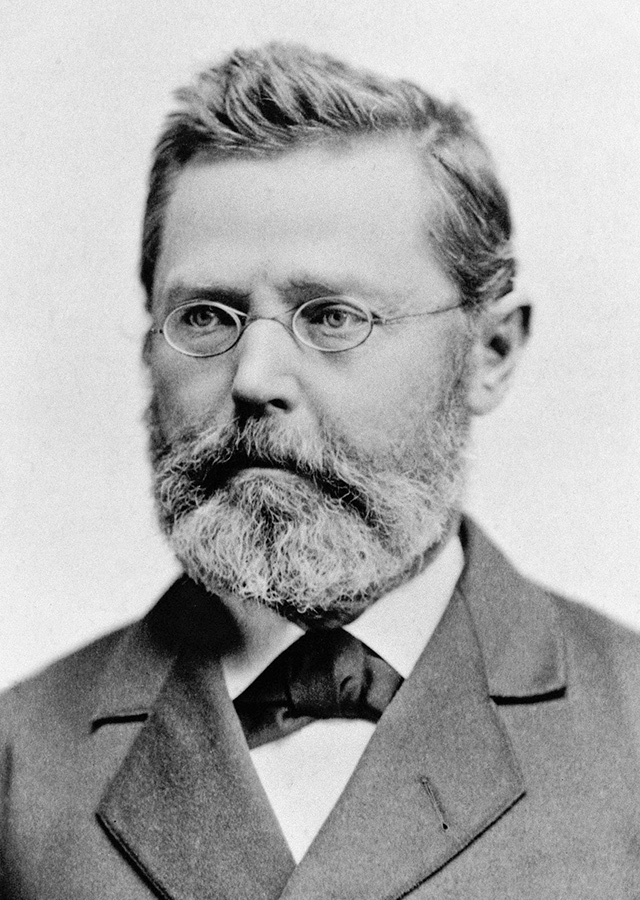 Back then the grapes
planted were Mission and he used a cider press,
but by the 1880s Krug saw a future for Cabernet
Sauvignon and other European varietals in the
valley. He
also built the state’s first tasting and sales
room.
Back then the grapes
planted were Mission and he used a cider press,
but by the 1880s Krug saw a future for Cabernet
Sauvignon and other European varietals in the
valley. He
also built the state’s first tasting and sales
room.
In
1943, during another, larger war, Cesare and
Rosa Mondavi (below)
bought the Krug winery, by then up to 147 acres;
today it is more than 850. Now,
four generations later, the Mondavi family is
still expanding, experimenting, replanting and
researching how to make better wines than the
last generation, 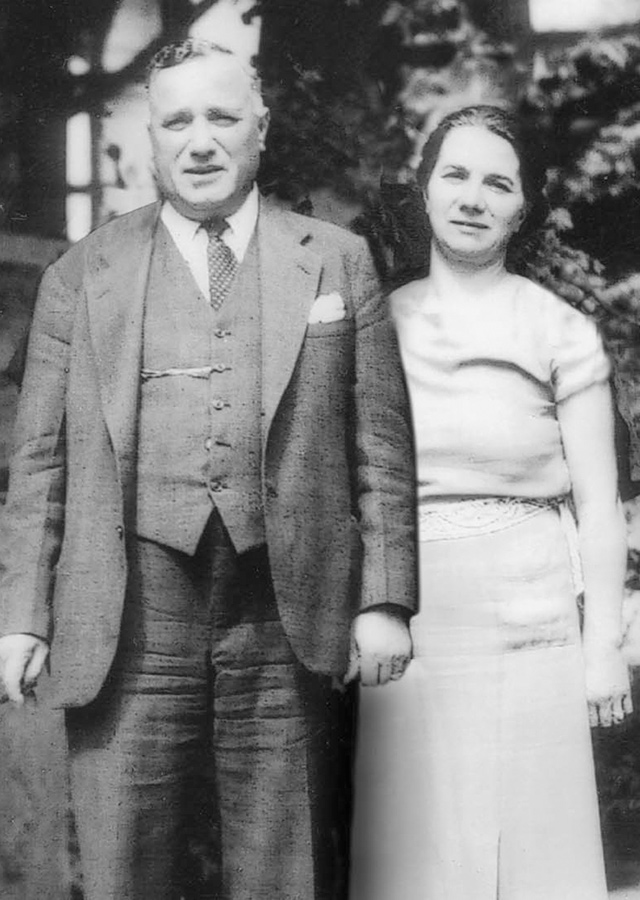 while still keeping to
a family style.
while still keeping to
a family style.
I caught up with what’s doing at Krug by having dinner with Peter Mondavi Jr. and his wife, Katie, at Bobby Van’s steakhouse in Manhattan. To offer a sense of how things have changed, Peter said that back in the 1960s, an acre in Napa cost between $2,000 and $5,000; now, if you can find one, that cost can be in excess of $300,000. Back then, an oak barrel cost $30, today $1,200.
Peter Mondavi Sr. was an innovator, the first to use French oak barrels and cold fermentation and to introduce varietal label wines. In 1986 he was honored by the Napa Valley Vintners Association as one of “Twelve Living Legends in the Napa Valley.”
A little family background is necessary here, without getting into a generational saga of discord. Yes, this is the same Mondavi family that includes the late Robert Mondavi, who, with his brother, Peter Sr., ran Krug through most of the post-war period, founding the Napa Valley Technical Group in 1947 and promoting single varietal labeling.
After their father’s death in 1959, the brothers had a fractious falling out in 1965 that resulted in Robert leaving Krug to set up his own namesake winery in Oakville, successfully promoting it as a premium wine that could compete with the best in Europe. (Much later, Robert and his side of the family lost control of their winery, owing to massive debt; Robert’s sons, Tim and Michael, now run their own wineries.)
 Peter Mondavi Sr. died
at the age of 101 just last year, and the torch
was passed to Peter Jr., and his brother, Marc.
Their father had encouraged both sons to go away
after college and to return to the wine business
only if they really had a passion for it. Peter
Jr., trained as an engineer, told me, “I’d
actually been working in the vineyards since I
was eight years old, so I never really left.”
There was a brief plan to put the Mondavi name
on the label alongside Charles Krug, but it is
now relegated to the back label.
Peter Mondavi Sr. died
at the age of 101 just last year, and the torch
was passed to Peter Jr., and his brother, Marc.
Their father had encouraged both sons to go away
after college and to return to the wine business
only if they really had a passion for it. Peter
Jr., trained as an engineer, told me, “I’d
actually been working in the vineyards since I
was eight years old, so I never really left.”
There was a brief plan to put the Mondavi name
on the label alongside Charles Krug, but it is
now relegated to the back label.
Given the 70-year history of the Mondavi
stewardship at Krug, it seemed reasonable to ask
whether the wines of the first two generations
had held up, since California was not known for
long-lived wines.“We had a library tasting of
the Krug Cabernets from 1978 to 1959, in which
the ’59 really stood out. Also, the ’66 vintage
is outstanding,” Peter said.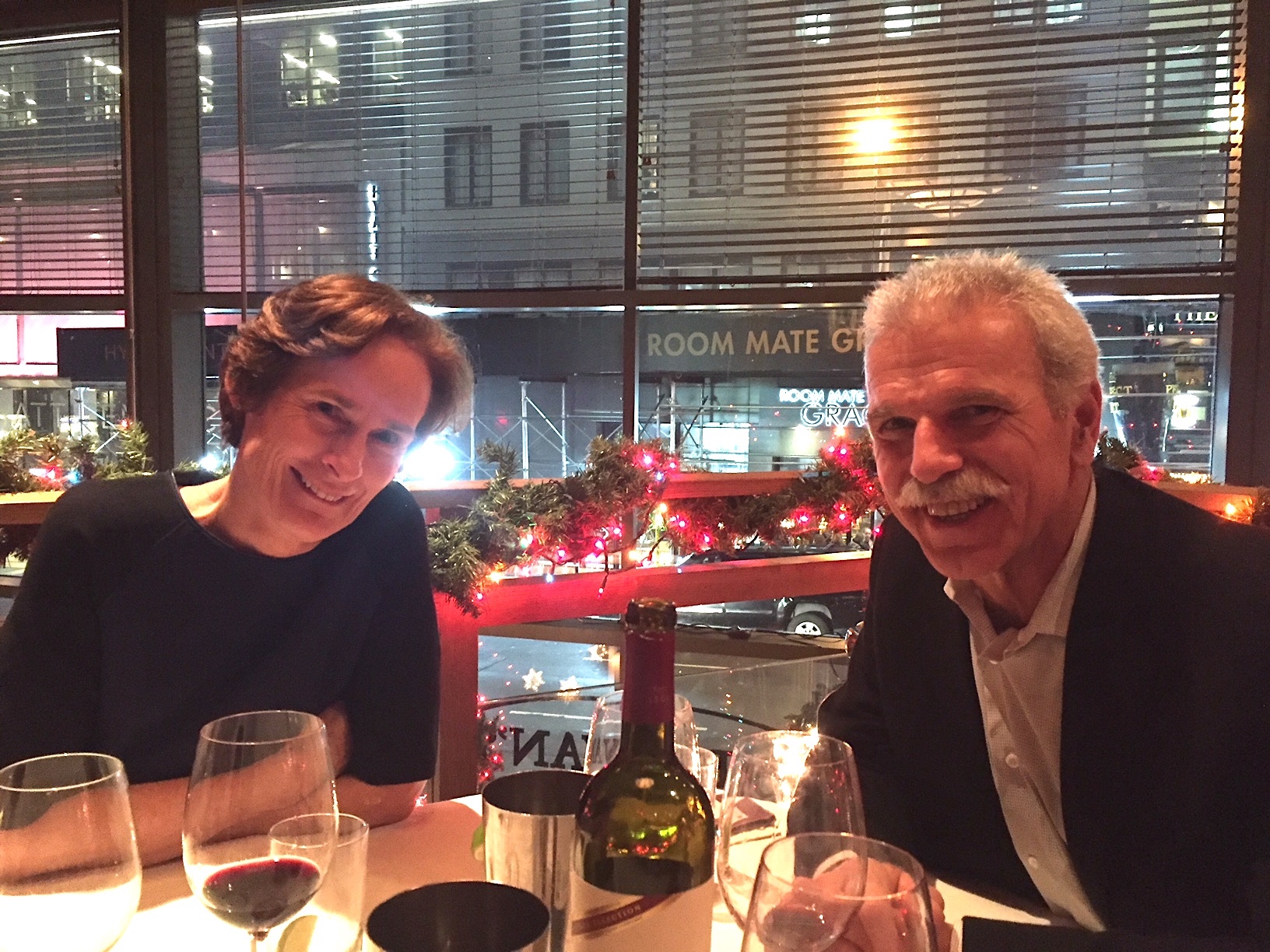
He said that since 2003 “Sustainability has been the key word at Krug,” and in 2008 a ten-year $25.6 million vineyard improvement program was completed. Today, 74% of the vineyards are planted with red Bordeaux varietals. In 2009 the Charles Krug Family Reserve Barrel Room and Carriage House were restored.
Over an appetizer of crabcakes and seared tuna, Peter, Jr., Katie (right), my wife and I enjoyed a Krug Limited Release Sauvignon Blanc ($18), cold-fermented in stainless steel, that escaped the overly grassy, perfumed style of so much New Zealand and California examples. A newly released 2016 Chardonnay ($21) gained body and fragrance by being aged in French oak sur lie for five months; at 14.3% alcohol it was bold but, I felt, lacked a balance of acid.
As faithful readers of this column know, I am not a fan of California wines above 14.5% alcohol, an opinion I expressed to Peter. He admitted that in some vintages his wines can go above that, but he argued that “alcohol is a byproduct,” meaning he and winemaker Stacy Clark do not deliberately aim for or boost the alcohol levels, as other wineries may do.
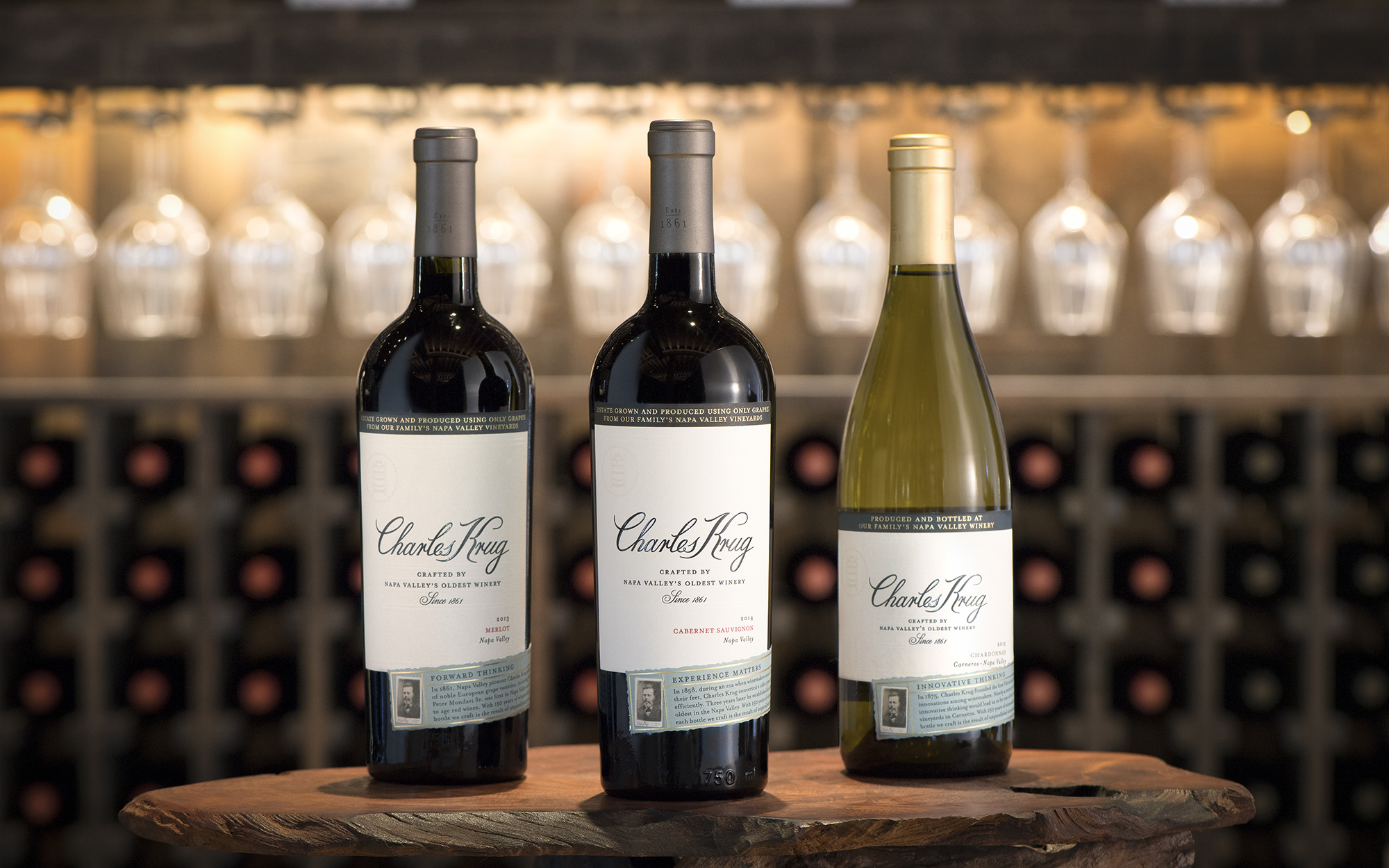 With steaks, a veal
chop and pork chop with garlic-rich potato cake,
I preferred the more elegant 2014 Vintage
Selection ($100) to the 2013. I found the
older wine, which is a blend of 98% Cab and 2%
Petit Verdot and with alcohol at 15.5%, at
this point lacked the complexity of the 2014,
though I think it may mellow out beautifully. Peter
said, “It looks like it will develop into a
great vintage.”
With steaks, a veal
chop and pork chop with garlic-rich potato cake,
I preferred the more elegant 2014 Vintage
Selection ($100) to the 2013. I found the
older wine, which is a blend of 98% Cab and 2%
Petit Verdot and with alcohol at 15.5%, at
this point lacked the complexity of the 2014,
though I think it may mellow out beautifully. Peter
said, “It looks like it will develop into a
great vintage.”
The 2014 Generations ($60) is a more complex blend to begin with—84% Cabernet Sauvignon, 9% Petit Verdot, 4% Merlot and 3% Malbec—closer to a Pauillac style. Unfortunately that evening, a bottle of 2014 Limited Release Cold Springs Vineyard ($125) was corked, but Peter was kind enough to send one to my home to try. It’s 94% Cabernet Sauvignon and 6% Petit Verdot, spending 19 months in new French oak. A seared, medium rare NY strip steak was a natural pairing for the big Cab, at a whopping 15.7% alcohol. I found it at first luscious, bold and very Californian in style, but after one glass I was not really ready for a second, simply because it was more like drinking a vintage Port, which typically are only about four percentage points higher in alcohol.
Still,
I take Peter at his word that wines like these
will develop, mature and gain complexity. Or
maybe not.
Time will tell, but the Mondavi family
has another generation in the wings to wait and
find out.
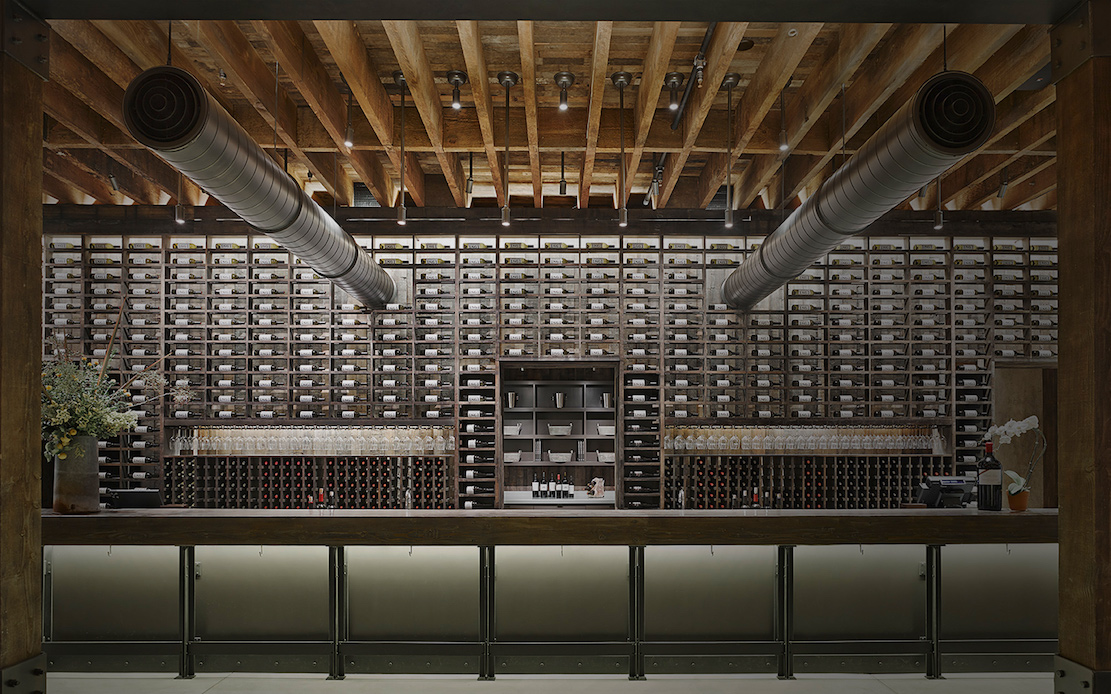
Charles Krug
Wine Library
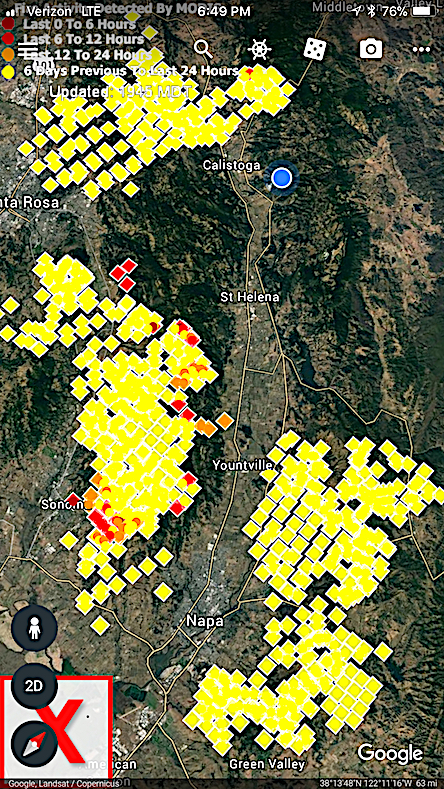
FIRE UPDATE
I also asked Peter about this autumn’s
devastating fires, which spared much of
the valleys' floor because vineyards have
little dry scrub brush and the vines contain
water; there was much more damage in Sonoma. A
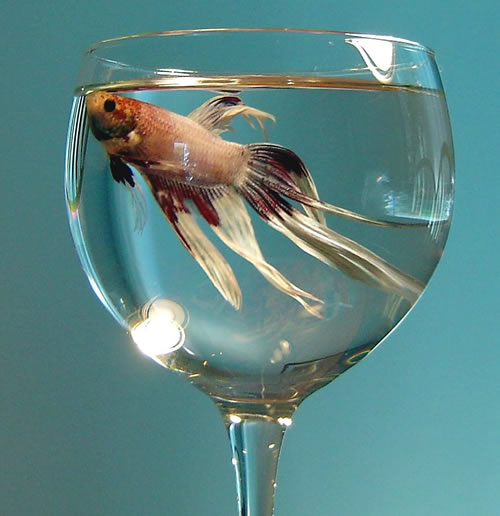 GOD FORBID YOU
SHOULD GET A LITTLE
GOD FORBID YOU
SHOULD GET A LITTLE
FISH BLADDER IN YOUR CALIFORNIA CHARDONNAY!
“It’s complicated
[making vegetarian wines.] After wines have
fermented, winemakers often depend on a practice
called fining to remove impurities. In red wines,
for instance, fining agents remove excess tannins.
In white wines, they remove proteins that can make
wine look cloudy. Traditionally, these fining
agents have been made from animal products: egg
whites for red wines and a derivative of fish
bladders, called isinglass, for whites. But a
growing number of Napa wineries are foregoing
animal-derived fining agents — whether to be vegan
friendly or simply because they want to produce
wines that are as natural as possible. Currently
there are at least two dozen Napa Valley wineries,
regularly open to the public, that pour wines that
are vegan friendly, whether labeled as such or
not.”—Peter Fish, “How Much of the Wine You Drink
Is Truly Vegan,” SF.com (11.12.17)
LET'S
PUT THE SAUSAGE BACK IN CHRISTMAS!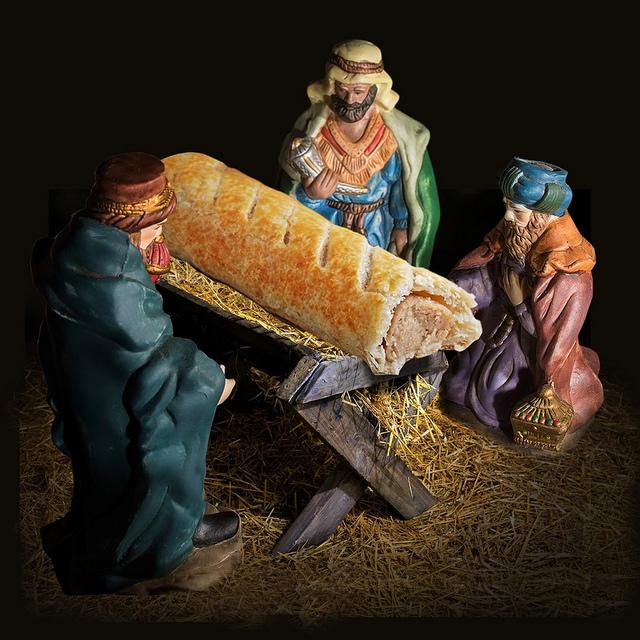
Greggs,
a British bakery chain with more than 1,800 locations,
released an Advent
calendar showing the Three Wise Men
gathered around a manger with a sausage roll in the
manger instead of Baby Jesus.
Wine
Column Sponsored by Banfi Vintners
SANGIOVESE FOR THE HOLIDAYS
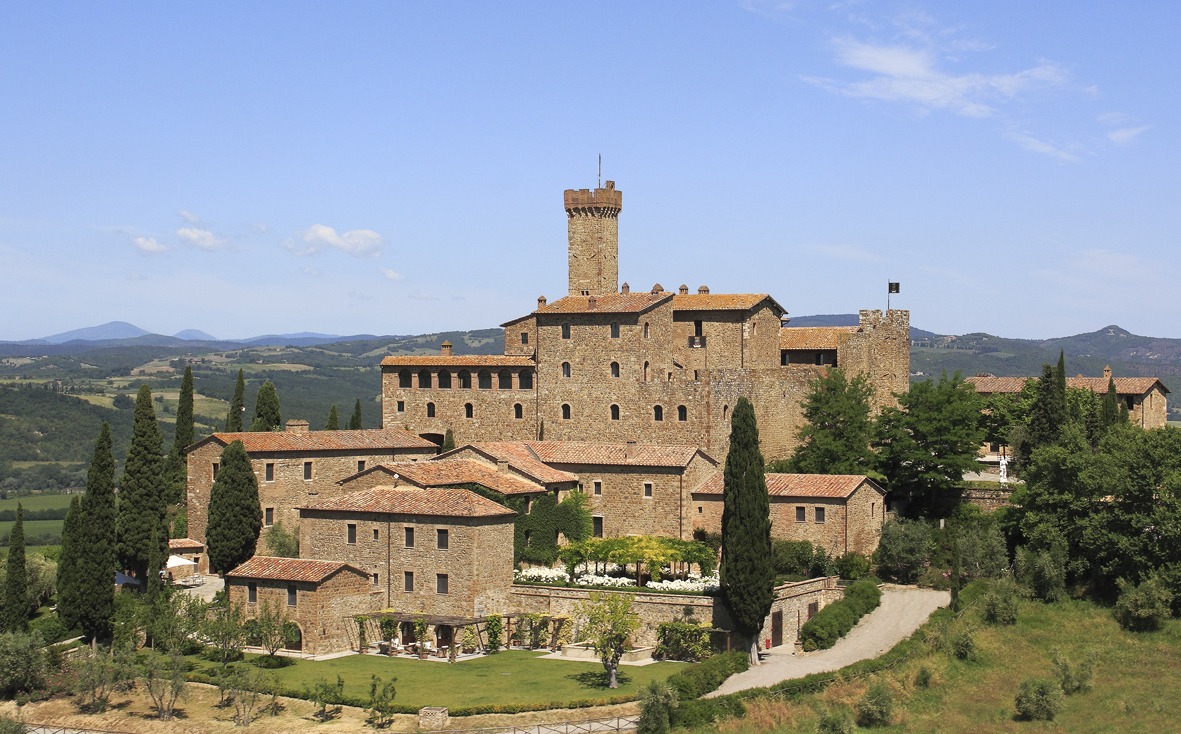 Wine
is a joy year-round but during the holidays, one grape varietal has really taken
center stage in my daily activities – that most
Italian of grapes, Sangiovese, and its ultimate
expression – Brunello di Montalcino.
Wine
is a joy year-round but during the holidays, one grape varietal has really taken
center stage in my daily activities – that most
Italian of grapes, Sangiovese, and its ultimate
expression – Brunello di Montalcino.
From mid-September through mid-October, the Sangiovese
grown for our various styles of red wines are be
harvested, culminating with the top selection for
Brunello di Montalcino.
Second, cooler weather
here means it is time to start enjoying more red wines
and especially Sangiovese based wines. That
includes Banfi’s cru of Brunello, Poggio alle Mura,
literally the cream of the crop of our Sangiovese
vineyards. Alongside our Poggio alle Mura Brunello di
Montalcino, this year we introduced two more wines
from the cru Poggio alle Mura – a Rosso di Montalcino
and a Riserva of Brunello. Rosso is sort of like the
younger brother of Brunello, also made from 100%
Sangiovese grapes but usually a selection from younger
vines and the wine is aged only two years compared to
the four required for Brunello. The
Riserva, on the other hand, is an even more selective
harvest of Sangiovese, and ages for an additional year
before release.
What is so special
about this cru Poggio alle Mura? Well, it is
the result our over 30 years of ongoing research at my
family’s vineyard estate, Castello Banfi. When we
first began planting our vines there in the late 1970s
studies from the University of Bordeaux indicated
which strains of many varietals we should plant, based
on the soil type and microclimate of each vineyard. But when it
came to the region’s native Sangiovese, there was only
local lore, no scientific research. So we took
it upon ourselves to figure out this vine, and set off
on three decades of incredibly detailed research.
We started with 600
apparent variations on Sangiovese, because it is so
susceptible to variations in weather and soil, and
narrowed that down to 160 truly genetically different
clones. We
planted a vineyard with two rows of each type, made
wine from each of them, and charted the differences –
remember, you only get one chance a year to make wine,
so this took time.
It took about ten
years to get some concrete results, though we continue
to experiment today and always will – you never stop
learning in science and nature! Once we
determined which were the best, complementary clones
that could be planted together to make the best
Brunello, we chose to plant them in what we determined
to be the optimal vineyard sites. Coincidentally,
the best soils and climate conditions are in the
slopes surrounding the medieval fortress today known
as Castello Banfi, known since Etruscan times as
Poggio alle Mura – the walled hilltop. Hence the
name of our most special “cru” of Brunello,
representing a synthesis between tradition and
innovation.
Though
the focus of this study was our Brunello, all of our
Sangiovese-based wines, including the super Tuscans
SummuS, Cum Laude, and Centine, benefited from this
work. And
that’s the third reason for celebrating Sangiovese
this month, for the range of wonderful reds that usher
us into autumn!
One wine in particular was inspired by our
research – the BelnerO, a Sangiovese dominant blend
with what I like to call a kiss of Cabernet and a
whisper of Merlot.
We grow the grapes a little differently for
BelnerO than for Brunello, make the wine with less oak
aging and released it earlier from the winery,
providing a counterpoint to Brunello and a lovely
terroir-driven wine in its own right.
If you know
Italians, you know that by nature we are
multi-faceted, varying in mood, and always passionate. As a
nation, we span from the hot sunny beaches of Sicily
near the African coast to the rugged mountains and
Alpine ski slopes of Trentino-Alto Adige in the north. Sangiovese
is grown in almost all of Italy’s regions and reflects
the unique nature of each; it is most famous
(rightfully so) in Tuscany, yet even there it reflects
the nuances of each hilltop, valley and subzone. It has
something a little different to say in Brunello than
Chianti, Morellino than Vino Nobile di Montepulciano,
Rosso di Montalcino than Super Tuscan blends.
Here is a smattering
of Sangiovese-based wines that you may wish to get to
know better, reflecting a spectrum that appeals to
every occasion, every taste, and every budget. We can
assure you that the conversation will never become
boring.
Recommendations for Celebrating
Sangiovese
BelnerO Proprietor’s Reserve Sangiovese
– A refined
cuvée of noble red grapes perfected by our pioneering
clonal research. This dark beauty, BelnerO, is
produced at our innovative winery, chosen 11
consecutive years as Italy’s Premier Vineyard Estate.
Fermented in our patented temperature controlled
French oak and aged approximately 2 additional years.
Unfiltered, and Nitrogen bottled to minimize sulfites.
Castello Banfi Brunello di Montalcino –
Rich, round, velvety and intensely
aromatic, with flavor hints of licorice, cherry, and
spices. Brunello di Montalcino possesses an intense
ruby-red color, and a depth, complexity and opulence
that is softened by an elegant, lingering aftertaste.
Unfiltered after 1998 vintage.
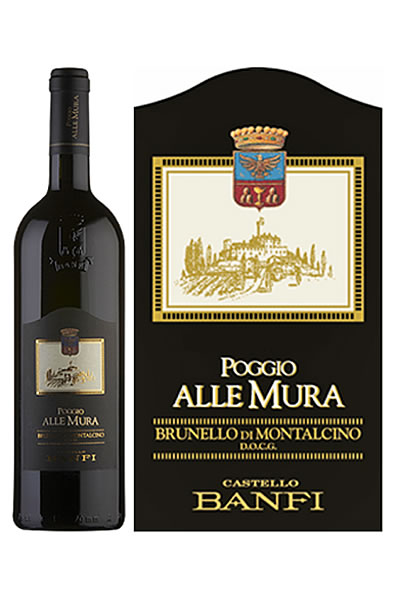 Castello
Banfi Rosso di Montalcino – Brunello's "younger brother," produced
from select Sangiovese grapes and aged in barrique for
10 to 12 months. Deep ruby-red, elegant, vibrant,
well-balanced and stylish with a dry velvety
finish.
Castello
Banfi Rosso di Montalcino – Brunello's "younger brother," produced
from select Sangiovese grapes and aged in barrique for
10 to 12 months. Deep ruby-red, elegant, vibrant,
well-balanced and stylish with a dry velvety
finish.
Poggio all’Oro Brunello di Montalcino
Riserva – A single vineyard selection of our most
historically outstanding Sangiovese, aged five years
before release, the additional year more than that
required of Brunello including 6 months in barrel and
6 months more in bottle to grant its “Riserva”
designation. Incredible
elegance and harmony. Intense with lots of fruit and
subtle wood influence. Round, complete, well balanced
with hints of chocolate and berries. Unfiltered after
1998.
Poggio alle Mura – The first tangible result of years of
intensive clonal research on Montalcino’s native
Sangiovese grape.
Estate bottled from the splendidly sun drenched
vineyards surrounding the medieval Castello from which
it takes its name.
The Brunello
di Montalcino is seductive, silky and smoky. Deep ruby
in color with an expressive bouquet of violets, fruits
and berries as well as cigar box, cedar and exotic
spices. The Rosso
di Montalcino is also intense ruby red. The bouquet
is fresh and fruity with typical varietal notes of
cherry and blackberry, enriched by more complex hints
of licorice, tobacco and hazelnut. It is full
bodied, yet with a soft structure, and a surprisingly
long finish. The Poggio alle Mura Brunello di Montalcino
Riserva is deep ruby red with garnet
reflections and a rich, ample bouquet that hints of
prune jam, coffee, cacao and a light balsamic note. It is full
and powerful, with ripe and gentle tannins that make
it velvety and harmonious; this wine is supported by a
pleasing minerality that to me speaks soundly of that
special hillside in southern Montalcino.
SummuS – A wine of towering elegance, SummuS is an
extraordinary blend of Sangiovese which contributes
body; Cabernet Sauvignon for fruit and structure; and
Syrah for elegance, character and a fruity bouquet. An elegant,
complex and harmonious red wine. 
Cum Laude – A complex and elegant red which graduated
“With Honors,” characterized by aromas of juicy
berries and fresh spices.
Centine – A Cuvee that is more than half
Sangiovese, the balanced consisting of equal parts of
Cabernet Sauvignon and Merlot. Vinified in
a firm, round style that easily accompanies a wide
range of dishes, this is a smooth and fragrantly
satisfying wine with international character, and a
perennial favorite at my own dinner table.
Banfi Chianti Superiore – The “Superiore” designation signifies
stricter government regulations regarding production
and aging requirements, as compared to regular
Chianti. An
intense ruby red wine with fruit forward aromas and
floral notes. This
is a round wine with well-balanced acidity and fruit.
Banfi Chianti Classico – An enduring classic: alluring
bouquet of black fruit and violets; rich flavors of
cherry and leather; supple tannins and good acidity
for dining.
Banfi Chianti Classico Riserva – Produced from select grapes grown in the
"Classico" region of Chianti, this dry, fruity and
well-balanced red has a full bouquet reminiscent of
violets.
Fonte alla Selva Chianti Classico – This is our newest entry into the Chianti
arena, coming from a 99 acre estate in Castellina, the
heart of the Chianti Classico region. The wine is
a captivating mauve red that smells of cherry, plum
and blackberry with hints of spice. It is
round, full and balanced with very good
acidity.
Col di Sasso – Sangiovese and Cabernet Sauvignon. Luscious,
complex and soft with persistent notes of fruit and
great Italian style structure.
Cristina Mariani is not related by
family or through business with John Mariani,
publisher of this newsletter
Any of John Mariani's books below may be ordered from amazon.com.
 The
Hound in Heaven (21st Century Lion Books)
is a novella, and for anyone who loves dogs,
Christmas, romance, inspiration, even the supernatural, I
hope you'll find this to be a treasured favorite.
The story concerns how, after a New England teacher,
his wife and their two daughters adopt a stray puppy found
in their barn in northern Maine, their lives seem full of
promise. But when tragedy strikes, their wonderful dog
Lazarus and the spirit of Christmas are the only things
that may bring his master back from the edge of
despair.
The
Hound in Heaven (21st Century Lion Books)
is a novella, and for anyone who loves dogs,
Christmas, romance, inspiration, even the supernatural, I
hope you'll find this to be a treasured favorite.
The story concerns how, after a New England teacher,
his wife and their two daughters adopt a stray puppy found
in their barn in northern Maine, their lives seem full of
promise. But when tragedy strikes, their wonderful dog
Lazarus and the spirit of Christmas are the only things
that may bring his master back from the edge of
despair. WATCH THE VIDEO!
“What a huge surprise turn this story took! I was completely stunned! I truly enjoyed this book and its message.” – Actress Ali MacGraw
“He had me at Page One. The amount of heart, human insight, soul searching, and deft literary strength that John Mariani pours into this airtight novella is vertigo-inducing. Perhaps ‘wow’ would be the best comment.” – James Dalessandro, author of Bohemian Heart and 1906.
“John Mariani’s Hound in Heaven starts with a well-painted portrayal of an American family, along with the requisite dog. A surprise event flips the action of the novel and captures us for a voyage leading to a hopeful and heart-warming message. A page turning, one sitting read, it’s the perfect antidote for the winter and promotion of holiday celebration.” – Ann Pearlman, author of The Christmas Cookie Club and A Gift for my Sister.
“John Mariani’s concise, achingly beautiful novella pulls a literary rabbit out of a hat – a mash-up of the cosmic and the intimate, the tragic and the heart-warming – a Christmas tale for all ages, and all faiths. Read it to your children, read it to yourself… but read it. Early and often. Highly recommended.” – Jay Bonansinga, New York Times bestselling author of Pinkerton’s War, The Sinking of The Eastland, and The Walking Dead: The Road To Woodbury.
“Amazing things happen when you open your heart to an animal. The Hound in Heaven delivers a powerful story of healing that is forged in the spiritual relationship between a man and his best friend. The book brings a message of hope that can enrich our images of family, love, and loss.” – Dr. Barbara Royal, author of The Royal Treatment.
 |
The Encyclopedia of American Food and Drink by John F. Mariani (Bloomsbury USA, $35) Modesty forbids me to praise my own new book, but let me proudly say that it is an extensive revision of the 4th edition that appeared more than a decade ago, before locavores, molecular cuisine, modernist cuisine, the Food Network and so much more, now included. Word origins have been completely updated, as have per capita consumption and production stats. Most important, for the first time since publication in the 1980s, the book includes more than 100 biographies of Americans who have changed the way we cook, eat and drink -- from Fannie Farmer and Julia Child to Robert Mondavi and Thomas Keller. "This book is amazing! It has entries for everything from `abalone' to `zwieback,' plus more than 500 recipes for classic American dishes and drinks."--Devra First, The Boston Globe. "Much needed in any kitchen library."--Bon Appetit. |
"Eating Italian will never be the same after reading John Mariani's entertaining and savory gastronomical history of the cuisine of Italy and how it won over appetites worldwide. . . . This book is such a tasteful narrative that it will literally make you hungry for Italian food and arouse your appetite for gastronomical history."--Don Oldenburg, USA Today. "Italian
restaurants--some good, some glitzy--far
outnumber their French rivals. Many of
these establishments are zestfully described
in How Italian Food Conquered the World, an
entertaining and fact-filled chronicle by
food-and-wine correspondent John F.
Mariani."--Aram Bakshian Jr., Wall Street
Journal.
"Equal parts
history, sociology, gastronomy, and just
plain fun, How Italian Food Conquered the
World tells the captivating and delicious
story of the (let's face it) everybody's
favorite cuisine with clarity, verve and
more than one surprise."--Colman Andrews,
editorial director of The Daily
Meal.com. "A fantastic and fascinating
read, covering everything from the influence
of Venice's spice trade to the impact of
Italian immigrants in America and the
evolution of alta cucina. This book will
serve as a terrific resource to anyone
interested in the real story of Italian
food."--Mary Ann Esposito, host of PBS-TV's
Ciao
Italia. "John Mariani has written the
definitive history of how Italians won their
way into our hearts, minds, and
stomachs. It's a story of pleasure over
pomp and taste over technique."--Danny Meyer,
owner of NYC restaurants Union Square
Cafe, The Modern, and Maialino.
|
 |
 |
 |
 |
 |
 |
 |
 |
 Everett Potter's Travel Report:
Everett Potter's Travel Report: 
 Eating Las Vegas
JOHN CURTAS has been covering the Las Vegas
food and restaurant scene since 1995. He is
the co-author of EATING LAS VEGAS – The 50
Essential Restaurants (as well as
the author of the Eating Las Vegas web site: www.eatinglasvegas.
He can also be seen every Friday morning as
the “resident foodie” for Wake Up With the
Wagners on KSNV TV (NBC) Channel 3 in
Las Vegas.
Eating Las Vegas
JOHN CURTAS has been covering the Las Vegas
food and restaurant scene since 1995. He is
the co-author of EATING LAS VEGAS – The 50
Essential Restaurants (as well as
the author of the Eating Las Vegas web site: www.eatinglasvegas.
He can also be seen every Friday morning as
the “resident foodie” for Wake Up With the
Wagners on KSNV TV (NBC) Channel 3 in
Las Vegas.

MARIANI'S VIRTUAL GOURMET
NEWSLETTER is published weekly. Editor/Publisher: John
Mariani.
Editor: Walter Bagley. Contributing Writers: Christopher Mariani,
Robert Mariani, Misha Mariani, John A. Curtas, Geoff Kalish, Mort
Hochstein, and
Brian Freedman. Contributing Photographer: Galina
Dargery. Technical Advisor: Gerry McLoughlin.
To un-subscribe from this newsletter,click here.
© copyright John Mariani 2017

